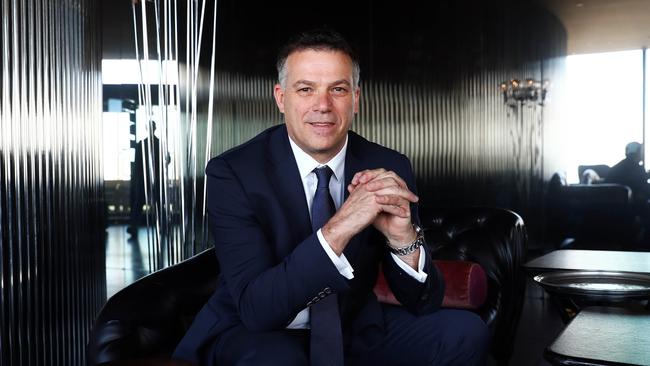BAE Systems to engineer a stronger STEM workforce
As Australia’s biggest defence manufacturer, BAE Systems Australia has an interest in the health of the defence workforce.

As Australia’s biggest defence manufacturer, with a turnover of $1.15bn and about 4300 employees, BAE Systems Australia has a vested interest in the health of the country’s defence workforce.
Chief technology officer Brad Yelland is proud of BAE Systems Australia’s technical achievements, but he is also concerned about the company’s, and the nation’s, engineering workforce.
“Engineers are critical to everything we do,” he told The Australian. A serious problem for the industry, he said, was the relative lack of Australians studying the STEM — science, technology, engineering and mathematics — subjects at school and university.
Like all of its peers, BAE Systems Australia needs a steady flow of engineers and technicians. It is short of engineering talent already and the problem will get only worse. So, the company is hoping some changes to the way schools and universities attract and train students will make a big difference.
One of the big changes Mr Yelland anticipated was the introduction of a professional apprenticeship, a five-year bachelor’s degree course based on a successful idea pioneered in Britain. In such programs, students spend part of their time at university and the remainder learning their profession on the job.
“We’re actually employing them right from the start,” Mr Yelland said. “We’re paying them, we pay their university fees, and then what we do with the universities is ensure that anything they’re learning on the job they don’t need to repeat in class — it’s only the things they’re not getting from on-the-job training that they get in class.
“So it reduces the amount of class time.
“Unlike in a sandwich degree, with the professional apprenticeship approach the students are using their knowledge every day. And that, we’re finding, is producing better engineers.”
COVID-19 permitting, the first professional apprenticeships could start as early as next academic year, Mr Yelland said.
“We’ve identified Australian universities (RMIT University and Swinburne) that are keen to work with us to get the scheme up and running; and we’ve got interest from UK universities (Cranfield, Sheffield, Lancaster, Central Lancashire, and Manchester Metropolitan) that want to work with Australian universities and leverage their learnings from the UK.”
BAE Systems Australia also has been working with Engineers Australia to get the engineering course properly certified.
“We’ll be starting small,” Mr Yelland said.
“We’ll focus on systems engineering and software development; they’re the areas that are most critical in terms of the shortages over the next decade.”
Ultimately, as more industry players and universities embrace the professional apprenticeship program, its annual intake could be significant, Mr Yelland said: “I would hope that we’re looking at at least 50 in each of the states that we’re operating in. We’re talking hundreds of students eventually.
“How quickly we can ramp that up depends on how smoothly it goes and how easy it is to attract people.”
The problem isn’t just the raw numbers, the availability of trained engineers also affects Australia’s ability to sustain a sovereign industrial capability.
Mr Yelland cited the analogy of an autonomous drone to illustrate this.
Using the concept of software control “loops”, he said the most basic was a simple autopilot.
The next loop was “guidance”, where the machine had the operator’s concept of operations embedded in it, and took over some pilot functions including decision-making about tactics; this was an important sovereign capability.
Next came “navigation” and the ability to operate safely in all environments, including where GPS was shut down by an adversary.
The last was “mission management”, where artificial intelligence helped the drone to make autonomous decisions about every aspect of a mission.
The guidance, navigation and mission management loops were all critical sovereign capabilities, and the software source code that made them possible must be developed and maintained by Australian software engineers, Mr Yelland said.
But kindling student interest in STEM subjects and then careers must begin early.
“You’ve got to make maths interesting,” Mr Yelland said, and that needed a holistic approach by schools and teachers and also by parents as well as their children’s prospective employers.
BAE Systems Australia is working with the Defence Department’s STEM council, chaired by Chief Defence Scientist Tanya Monro, on engaging students and careers advisers at secondary and primary level.
Just before this year’s Formula One Grand Prix in Melbourne was cancelled, the company, the Grand Prix Corporation’s STEM group and RMIT University participated with the McLaren F1 team in an “F1 in Schools” activity for students and careers advisers.
“This year it was, How do you turn a Formula One racing car into a winning autonomous race car?” Mr Yelland said.
Primary and secondary schools were given different sets of questions to answer and a resources kit to help them, and then presented their solutions.
And even though the race was cancelled, there was still a winner, Mr Yelland said: the STEM professions.


